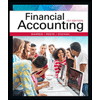
Income Statement:
It is a financial statement that shows the
Statement of
It is a financial statement that shows the amount of profit retained by the company for future unforeseen events.
The balance sheet concludes the assets invested in by the company as well as reports the liabilities and equity taken up, thus, showing the economic or financial status of the company.
Closing entries:
These entries are made for those items whose balance needs to be zero for the next accounting period otherwise data from two accounting periods will get mixed with each other and we only want to see the data of one accounting period in it.
Return on asset:
It tells us how much the company is earning from the total amount of assets it has. It is determined by dividing net income from total average assets into percentage terms.
Debt ratio:
It shows how much of the company’s assets are bought using debt capital. The higher the debt ratio higher the financial risk, lower the debt ratio lower the financial risk. it comes after dividing debt capital by total assets.
Profit margin ratio:
It shows how much the company is earning for every dollar of its revenue. It comes after dividing net sales from revenue into percentage terms.
It shows whether the company will be able to pay its current liabilities out of its current asset or not. It comes after dividing current liabilities by current assets.
1.
To prepare: Income statement, statement of retained earnings, and classified balance sheet.
2.
To prepare:
3.
a.
Return on assets ratio.
b.
Debt ratio.
c.
Profit margin ratio.
d.
Current ratio.
Want to see the full answer?
Check out a sample textbook solution
Chapter 3 Solutions
FIN+MAN ACCOUNTING (LL) W/ ACCESS CODE
- The Fantastic Ice Cream Shoppe sold 9,000 servings of ice cream during June for $4 per serving. The shop purchases the ice cream in large tubs from the Dream Ice Cream Company. Each tub costs the shop $9 and has enough ice cream to fill 20 ice cream cones. The shop purchases the ice cream cones for $0.10 each from a local warehouse club. Located in an outdoor mall, the rent for the shop space is $2,050 per month. The shop expenses $290 a month for the depreciation of the shop's furniture and equipment. During June, the shop incurred an additional $2,700 of other operating expenses (75% of these were fixed costs).arrow_forwardHello tutor please provide correct answer general accounting questionarrow_forwardRobinson Manufacturing discovered the following information in its accounting records: $519,800 in direct materials used, $223,500 in direct labor, and $775,115 in manufacturing overhead. The Work in Process Inventory account had an opening balance of $72,400 and a closing balance of $87,600. Calculate the company’s Cost of Goods Manufactured.arrow_forward
- Sanjay would like to organize HOS (a business entity) as either an S corporation or as a corporation (taxed as a C corporation) generating a 16 percent annual before-tax return on a $350,000 investment. Sanjay’s marginal tax rate is 24 percent and the corporate tax rate is 21 percent. Sanjay’s marginal tax rate on individual capital gains and dividends is 15 percent. HOS will pay out its after-tax earnings every year to either its members or its shareholders. If HOS is taxed as an S corporation, the business income allocation would qualify for the deduction for qualified business income (assume no limitations on the deduction). Assume Sanjay does not owe any additional Medicare tax or net investment income tax. Required 1. For each scenario, C corporation and S corporation, calculate the total tax (entity level and owner level). 2. For each scenario, C corporation and S corporation, calculate the effective tax rate. C Corporation S Corporation 1. Total tax…arrow_forwardI need correct solution of this general accounting questionarrow_forwardHii expert please given correct answer general accountingarrow_forward
- Markowis Corp has collected the following data concerning its maintenance costs for the pest 6 months units produced Total cost July 18,015 36,036 august 37,032 40,048 September 36,036 55,055 October 22,022 38,038 November 40,040 74,575 December 38,038 62,062 Compute the variable coot per unit using the high-low method. (Round variable cost per mile to 2 decimal places e.g. 1.25) Compute the fixed cost elements using the high-low method.arrow_forwardUse the following data to determine the total dollar amount of assets to be classified as current assets. Marigold Corp. Balance Sheet December 31, 2025 Cash and cash equivalents Accounts receivable Inventory $67000 Accounts payable $126000 86500 Salaries and wages payable 11100 149000 Bonds payable 161500 Prepaid insurance 83000 Total liabilities 298600 Stock investments (long-term) 193000 Land 199500 Buildings $226000 Common stock 309400 Less: Accumulated depreciation (53500) 172500 Retained earnings 475500 Trademarks 133000 Total stockholders' equity 784900 Total assets $1083500 Total liabilities and stockholders' equity $1083500 ○ $269100 $385500 ○ $236500 ○ $578500arrow_forwardShould the machine be replaced?arrow_forward
- Using the following balance sheet and income statement data, what is the total amount of working capital? Current assets $39700 Net income $52100 Current liabilities 19800 Stockholders' equity 96700 Average assets 198400 Total liabilities 52100 Total assets 148800 Average common shares outstanding was 18600. ○ $9900 ○ $39700 ○ $19900 ○ $12400arrow_forwardSuppose that Old Navy has assets of $4265000, common stock of $1018000, and retained earnings of $659000. What are the creditors' claims on their assets? ○ $2588000 ○ $3906000 ○ $1677000 ○ $4624000arrow_forwardBrody Corp. uses a process costing system. Beginning inventory for January consisted of 1,400 units that were 46% completed. 10,300 units were started during January. On January 31, the inventory consisted of 550 units that were 77% completed. How many units were completed during the period?arrow_forward
 EBK CONTEMPORARY FINANCIAL MANAGEMENTFinanceISBN:9781337514835Author:MOYERPublisher:CENGAGE LEARNING - CONSIGNMENT
EBK CONTEMPORARY FINANCIAL MANAGEMENTFinanceISBN:9781337514835Author:MOYERPublisher:CENGAGE LEARNING - CONSIGNMENT Financial AccountingAccountingISBN:9781337272124Author:Carl Warren, James M. Reeve, Jonathan DuchacPublisher:Cengage Learning
Financial AccountingAccountingISBN:9781337272124Author:Carl Warren, James M. Reeve, Jonathan DuchacPublisher:Cengage Learning Managerial Accounting: The Cornerstone of Busines...AccountingISBN:9781337115773Author:Maryanne M. Mowen, Don R. Hansen, Dan L. HeitgerPublisher:Cengage Learning
Managerial Accounting: The Cornerstone of Busines...AccountingISBN:9781337115773Author:Maryanne M. Mowen, Don R. Hansen, Dan L. HeitgerPublisher:Cengage Learning


